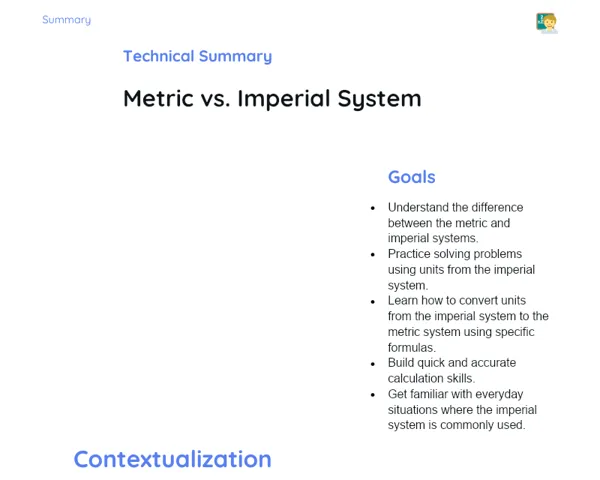Goals
1. Grasp the concept of a trapezoid and its properties.
2. Compute the measures of sides and angles in a trapezoid.
3. Tackle real-life problems involving trapezoids, such as plots of land shaped like trapezoids.
Contextualization
Trapezoids are geometric figures that hold significant importance in our everyday lives. Think about looking at a layout for a parcel of land or a building design. Often, these areas aren't as straightforward in shape as we would prefer, and that’s where trapezoids become essential. They aid us in calculating areas and perimeters of irregularly shaped lands, ensuring that we can plan constructions and spaces accurately and effectively. Understanding trapeoid properties is vital for various professions, including architecture, civil engineering, and surveying.
Subject Relevance
To Remember!
Definition and Properties of a Trapezoid
A trapezoid is a four-sided figure that has two sides parallel, known as the bases. The other two sides are referred to as non-parallel sides. The total of the internal angles in a trapezoid is always 360 degrees. Trapezoids come with several useful properties that help in area and perimeter calculations.
-
A trapezoid has two parallel bases.
-
The sum of internal angles equals 360 degrees.
-
The non-parallel sides are termed lateral sides.
Classification of Trapezoids
Trapezoids can be divided into three main categories: isosceles, right, and scalene. Each type has unique properties that affect geometric calculations and their real-world applications.
-
Isosceles Trapezoid: has lateral sides of equal length.
-
Right Trapezoid: has two right angles.
-
Scalene Trapezoid: has no equal sides or angles.
Calculating Areas and Perimeters of Trapezoids
To find the area of a trapezoid, we use the formula: Area = ((Base 1 + Base 2) / 2) * Height. The perimeter is found by summing the lengths of all sides. These calculations are crucial for determining the space and materials needed in land measurements and construction.
-
Area Formula: ((Base 1 + Base 2) / 2) * Height.
-
Perimeter is the sum of all sides.
-
These calculations are significant for construction projects and land assessments.
Practical Applications
-
Surveying: Assessing uneven plots of land for sale or documentation.
-
Architecture: Designing spaces and structures using trapezoids for stability and efficiency.
-
Civil Engineering: Implementing trapezoids in structures like bridges to enhance stability and resource efficiency.
Key Terms
-
Trapezoid: A four-sided figure with two parallel sides.
-
Base: The parallel sides of a trapezoid.
-
Height: The perpendicular distance between the bases of a trapezoid.
-
Isosceles Trapezoid: A trapezoid with equal non-parallel sides.
-
Right Trapezoid: A trapezoid featuring two right angles.
-
Scalene Trapezoid: A trapezoid where all sides and angles differ.
Questions for Reflections
-
How can your understanding of trapezoids benefit your future career?
-
What are the advantages of utilizing trapezoids in civil engineering projects?
-
Reflect on a day-to-day scenario where the trapezoidal shape might be advantageous and explain why.
Calculating Area and Perimeter of Trapezoidal Land
In this mini-challenge, you will calculate the area and perimeter of a trapezoidal plot of land. This practical task will solidify your understanding of the formulas learned and showcase how these calculations are relevant in real-life situations.
Instructions
-
Sketch a trapezoid on a piece of paper, defining its dimensions (bases and height).
-
Calculate the area of the trapezoid using the formula: Area = ((Base 1 + Base 2) / 2) * Height.
-
Determine the perimeter by adding the lengths of all sides of the trapezoid.
-
Document all calculations and prepare a concise explanation of your thought process.
-
Present your findings and explanations to your classmates for comparison and discussion.


